It started as a simple outing — just a group of boys on bikes, riding toward a familiar cave in the hills of northern Thailand. A birthday tradition. A moment of joy. But the rains came early and sealed them inside. Thirteen lives were suddenly at risk, trapped by rising water and solid stone. What followed wasn’t just a rescue — it was a race against time, a global effort built on courage and sacrifice. And at the heart of it all was a secret plan no one thought would work.
The Birthday Plan

June 23, 2018. The boys were soaked in sweat from practice, laughter trailing behind as they mounted their bikes. A trip to the cave—something they’d done before. A ritual. A reward.
Coach Ekkapol, just 25, was quiet, monk-trained, gentle. He knew the cave like an old friend. “One hour,” he said. Explore, and be back in time for the party. That was the promise.
The twelve boys in the soccer team followed him into Tham Luang. They pedaled past warning signs, past trees still dripping from earlier rain. None of them saw the clouds return—or sensed the cave sealing behind them.
Clouds Over Mae Sai

In Mae Sai, a district in Chiang Rai Province, life hummed on. Rain had come, but softly, just enough to glisten on mango stalls and quiet scooter engines. No one looked up long enough to notice what the sky was building.
At home, parents chopped fruit and set out plates for the birthday party. “Be back before dark,” one mother had said, pressing her hand briefly to her son’s shoulder.
But evening fell, and no one came home. Phones rang, unanswered. Then someone whispered: the cave. In that instant, the air changed. Mae Sai exhaled hope—and inhaled fear.
The Cave They Knew

To outsiders, it was a cave. To the Wild Boars, it was a playground—twists and turns, echoes and secrets. But Tham Luang wasn’t just rock. It was alive. Breathing. Watching.
A sign warned, clear as daylight: Do Not Enter During Rainy Season. But it was still June. That meant safe. That meant routine. That meant the cave would let them out again.
Inside, their shoes slapped wet stone. Flashlights danced on walls. Behind them, the sky cracked. Water began seeping in—quietly at first, then relentlessly. And the cave began to change.
The Mouth of the Cave Closes

It started with a ripple. Then a current. Then a sound that didn’t belong inside—a soft, rushing growl like breath through clenched teeth. Coach Eak turned, flashlight shaking in his hand.
The exit was flooding. Water surged through corridors they had just walked. In minutes, their way out was under. They tried. They pushed. But the cave moved faster.
They scrambled upward, deeper, with mud slick on their palms and fear rising in their throats. Behind them, the mouth vanished, swallowed by water. Ahead, there was only darkness, and time was already running thin.
Empty Bikes. Silent Phones

A ranger spotted them first—bikes leaning neatly against the fence, bags untouched, cleats still damp. It looked innocent at first, as if they’d return any minute.
He waited. Called out. No response. Flashlights swept the tree line. Then the pit grew in his stomach. Something was wrong.
Inside the cave, rangers found footprints leading in but none leading back. The first call to the governor was calm on the surface, but the words dropped like stone: “Thirteen missing. Still inside.”
The First Search

Volunteers stepped into the mouth with little more than headlamps and rope. They weren’t trained for this. They were fathers, cousins, teachers—driven by instinct and fear.
Water reached their knees, then their waists. Rocks slipped beneath their boots. Visibility dropped to nothing. Their fingers touched the walls like reading Braille, hoping for signs of life.
They made it to Chamber Three. Then the current took over. “It’s too strong,” one gasped, soaked and shaking. Outside, parents stood in the rain, watching the cave, praying it would speak.
The Monsoon Isn’t Waiting

The rain didn’t scream. It crept—an endless, whispering downpour that fell through cracks, into soil, and finally into stone. The cave drank every drop until it overflowed.
Generators groaned beside diesel pumps, choking on mud and pressure. Engineers worked sleepless, eyes rimmed red. But the water kept rising. It didn’t care about effort. Or hope.
Inside, the boys rationed light and breath. Outside, a SEAL slammed his fist on a map. “We don’t have days,” he barked. “We have hours.” And even those were bleeding away.
Flashlights in a Black Throat

They moved in a single file. Thai Navy SEALs—elite, disciplined, trained for chaos. But why would the cave care about rank? It just wrapped around them like a fist.
Visibility vanished after the first bend. Flashlights lit nothing but suspended mud. Tanks scraped against limestone. One diver whispered through the radio, “Where are they?” Only his breathing answered.
Twelve hours in, the team surfaced—exhausted, trembling. “We can’t reach them,” a voice said. He wasn’t ashamed. He was scared. “Not without help.”
A Country Holds Its Breath

By June 25, Thailand had stopped moving. Televisions flickered in cafes. Radios buzzed on long-haul trucks. Everyone was listening for news from the mountain.
At the cave’s mouth, volunteers stirred vats of rice and handed out bottled water. “They’re all our sons now,” a woman said, wiping her tears on her jacket.
In Bangkok, the prime minister was briefed. In Mae Sai, parents lit incense. Across oceans, strangers refreshed news feeds with shaking hands. But inside Tham Luang, there was dangerous silence.
SEALs Enter, but the Flood Wins

They tried again. Thai Navy SEALs dove deeper, setting oxygen tanks like breadcrumbs in the dark. Ropes were knotted. Timers synced. This time, they’d push past Chamber Six.
But the cave fought back. Mud poured in behind them. One diver surfaced coughing, his mask half-flooded. “This is beyond us,” he wheezed. “We’re trained for war… not this.”
The deeper they went, the harder the mountain clenched. The cave wasn’t just resisting—it was warning them. Go back. Or drown.
A Father Cries on Camera

One of the trapped boys’ fathers, Adisak Wongsukchan, held up a photo of his son, whom he had saved from his phone, in front of the camera. “My son…” His voice cracked. Reporters lowered their lenses. No one moved.
Behind him, the camp buzzed: SEALs hunched over maps, medics checking oxygen flow. But he couldn’t see it. He only saw the cave.
“I just want to know if he’s warm. I can’t wait to hug him,” he whispered when the cameras cut. Then his knees gave, and his hands caught his tears before the ground did.
Calling for Help Across Oceans

With every hour lost, desperation grew bolder. Thai authorities reached across continents. Two names came back with certainty: Rick Stanton and John Volanthen. Known experts in cave rescues. Veterans of darkness. Engineers of the impossible. They said yes without hesitation.
The United States deployed military divers, engineers, and logistics teams. Elon Musk’s team offered a rescue capsule. He flew to the site himself. Some tools were used. Some weren’t.
But every offer mattered. Every flight, every map, every message whispered the same truth: the world saw thirteen strangers—and still chose to act. Yet, how long could a helping hand reach?
Veterans of Darkness

Rick Stanton and John Volanthen landed on June 27. No grand entrance. No headlines. Just two men in plain clothes, carrying gear worn by time and repetition.
They didn’t talk much. They listened. Studied the maps. Measured rope. Checked flow rates. They asked about visibility, choke points, cave depth—treating the cave like a math problem with a pulse.
Then they suited up. Quietly. Deliberately. “We won’t go fast,” Rick said. “We’ll go far.” They slid into the black, swallowed by the mountain without a sound.
The Clock Is Bleeding Oxygen

Inside, the boys were slowing down. No food. No time. Only sips from cave drips to survive after their water ran out. Their muscles ached. Hunger blurred thought. Time dissolved into darkness. Coach Eak told them to breathe slowly. Save energy. Save air.
He taught them meditation—draw in, hold, release. Again. Again. The cave was shrinking. Not in space, but in safety. The oxygen was thinning by the hour.
Their flashlight batteries faded. Their world narrowed to breath and silence. They didn’t know how many days had passed. But they could feel what was missing: air.
The Punchline No One Laughed At

They were too weak to cry. Too tired to complain. But boys find laughter even where it shouldn’t exist. “If one of us dies first,” someone whispered, “we’ll eat him.”
A beat of silence. Then chuckles—half real, half defense. But Coach Eak heard the truth beneath it. It wasn’t a joke. It was a plan. A survival pact.
Later, he would tell it straight: “They said… If one died, the rest would survive on him.” There was horror in his voice.
Cameras Are Set

By June 28, the world had arrived. Satellite trucks buzzed beside prayer tents. Drones hovered. Microphones waited. But the cave gave nothing.
Reporters repeated the same lines. “Still missing.” “Still trapped.” Rain fell in soft, relentless rhythm. The cave entrance remained sealed—an unblinking eye watching them all.
“We just need a sound,” one reporter whispered off-mic. “Anything.” But all they got was the hush of mud, and the sense that the mountain was holding its breath.
Threads of Rope. Trails of Mud

Rick and John dove again—each dive a lifeline tied to hope. They unspooled rope behind them, inch by inch, knowing it was the only way back.
Visibility was near zero. They moved by memory, by instinct, by touch. The cave shifted constantly—mud clawed at their fins, ceilings scraped metal tanks.
Then: claw marks on sandbanks. A smudge on the wall. A small footprint. Still fresh. Still soft. They weren’t far now. The boys had passed this way. And they were close!
Voices from the Void

Rick surfaced into an air pocket, expecting silence. But something shimmered. Movement. Then—eyes. Faces. Thin, wide, stunned. A dozen boys. Huddled. Breathing.
“Hello?” he called. One boy stirred. Then another. Whispers became greetings. “Sawasdee khrap,” came a voice. Then in English: “Thank you.” Rick blinked tears behind his mask.
John surfaced beside him. “How many?” Rick asked. Fingers went up—ten. Then three more. “Thirteen.” He exhaled hard. The miracle was real. Until… getting out was another matter.
“How Many of You?”

John confirmed. All thirteen lives were indeed alive. He couldn’t believe what he was witnessing. How did these kids survive in the cave for several days without food and barefoot?
They were skeletal, sunken-eyed, yet somehow… smiling. Their clothes clung to them like wet paper. They sat on rock and mud, condensation dripping from the ceiling like a second clock.
“Tell them we’re coming,” Rick said into the camera. His voice cracked. “Tell the world.” Then he turned off his light. They had to go back. And bring the world with them. But how?
“Brilliant”

The footage showed Rick’s voice trembling through the mask: “Brilliant.” It wasn’t a victory yet, but it was relief. Thirteen lives in a cave that should’ve claimed them days ago.
At the surface, the memory card was passed hand to hand, trembling. Then it played on a government laptop—wet eyes. Clenched fists. Disbelief.
Across the world, headlines ignited: FOUND ALIVE. But inside the camp, no one cheered. “It’s not over,” someone whispered. “We’ve only found them. Saving them…God, that’s the storm.”
A Shelf in a Drowning Cathedral

The boys sat on a raised ledge barely three feet above rising water. It wasn’t shelter—it was a countdown. The cathedral-sized chamber echoed with slow, liquid echoes.
There was no path out. No food left. No heat. Just this rock shelf, thirteen hearts, and a tide that didn’t care they’d survived.
“We found them in time,” one rescuer said. “But now… now comes the impossible part.” Because this chamber wasn’t their sanctuary, it was their trap.
Not Enough Air to Breathe

The air was changing. Heavier. Thicker. Breathing became work. Some boys slept more. Others couldn’t sleep at all. One whispered, “My head hurts,” then drifted into silence.
Carbon dioxide was building. Oxygen dropping. Thai Navy SEALs brought tanks, crawling through the dark with supplies strapped to their backs like lifelines. They stayed with the boys, rotating in shifts.
“This is the deepest we’ve ever operated,” a commander said. “And it’s not enough.” The cave was no longer just wet. It was suffocating. Slowly. Quietly. Irreversibly.
Feeding the Forgotten

The boys hadn’t eaten in nine days. When the first food arrived—gel packs, water pouches—they didn’t tear into it. They cried. Then passed it to each other before taking a bite.
Divers navigated blind turns and near-zero visibility just to deliver calories. Every trip was a gamble. Every corner held the threat of disorientation or death.
Notes were tucked in waterproof bags: “I love you.” “Tell Dad I’m okay.” The cave let the messages out. But food and hope weren’t a rescue. They were just borrowed time.
One Diver. One Great Purpose

Saman Kunan entered the cave with oxygen tanks on July 5. He was a former Thai Navy SEAL. Quiet. Respected. Steady. He made the drop. Then turned back.
Somewhere in the tunnel, his air ran out. He collapsed, alone in the black. His partner found him moments too late. The rescue had claimed its first life.
At dawn, his body was carried to the surface. The camp stood still. “His job was to deliver oxygen,” an officer said. “He did not have enough on his way back.”
Hope Is a Fragile Thing
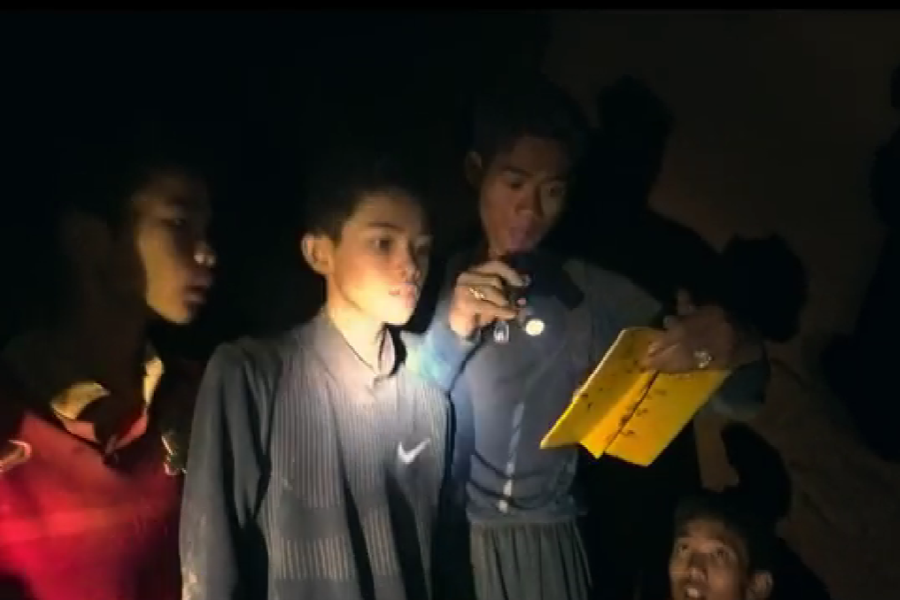
They told the boys gently. Coach Eak gathered them close. “One of the divers… didn’t make it.” The words floated in the dark like a stone skipping across still water.
Some boys blinked. One looked away. Most said nothing. Not from shock, but because they understood. Hope, here, was fragile. And fragile things break quietly.
Outside, rescuers moved more slowly. Volunteers wiped their eyes. “If it can happen to Saman,” a SEAL whispered, “it can happen to any of us.” Yet no one stopped. They just moved with more reverence.
No One Wants to Say It

In the operations tent, the facts were laid bare: the boys couldn’t swim. The water was rising. The monsoon was coming back. And the oxygen was nearly gone.
“We can’t walk them out,” one official said. “We can’t teach them to dive. And if we wait, they die.” The cave was out of mercy.
A long pause. Then, finally, someone said it: “Sedation.” The word settled like a breath held too long. Eyes widened. No one laughed. This wasn’t a plan. It’s time for a gamble.
The Doctor with the Needle
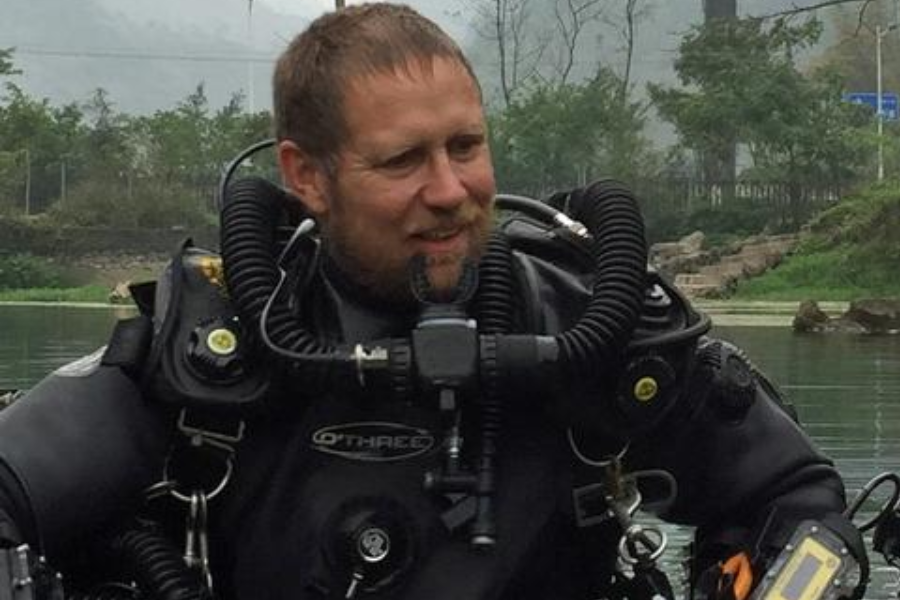
Dr. Richard “Harry” Harris was a cave diver. But more than that, he was an anaesthetist. A quiet man trained to hold the edge between sleep and death.
“You want me to sedate children,” he asked, “and float them underwater? For hours? Through that?” He studied the cave maps like a battlefield surgeon weighing where to cut.
He agreed—not with confidence but with conviction. Then he entered the cave, eyes on the dark tunnel ahead. The boys smiled at him. He smiled back. Outside, the parents would have to do the unimaginable.
The Paper No Parent Should Ever Sign

Under the rescue tents, parents sat on low stools, knees touching tarps. An official began speaking—softly, carefully. “There is no safe option,” he said. “Only the least dangerous.”
He explained the sedation plan. Each child would be anesthetized. Carried underwater. Unconscious. No guarantees. Then came the forms—legal waivers, medical consent.
One father stared at the signature line. “So… if he dies, it’s on me?” he asked, voice cracking. They signed anyway. Trembling. Not out of agreement—but out of love. The kind that surrenders everything.
“They’ll Be Asleep When They Die”
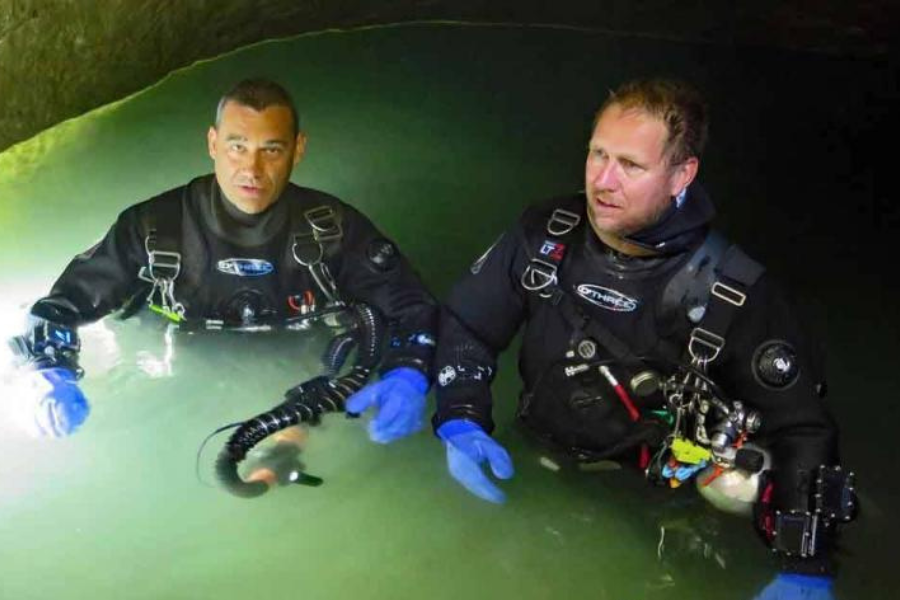
Dr. Harris laid out the protocol. “I don’t know if this will work,” he said. “But if it doesn’t… at least they won’t feel it. They’ll be asleep.”
His words hung in the air like fog. No one replied. Even the SEALs—hardened, scarred—couldn’t look directly at him. Because what he was about to do felt impossible.
Still, he opened his kit. Laid out the syringes. Counted doses. “This is the best bad plan we have,” he whispered. Then he rolled up his sleeves and began.
Sedate the Children. One by One
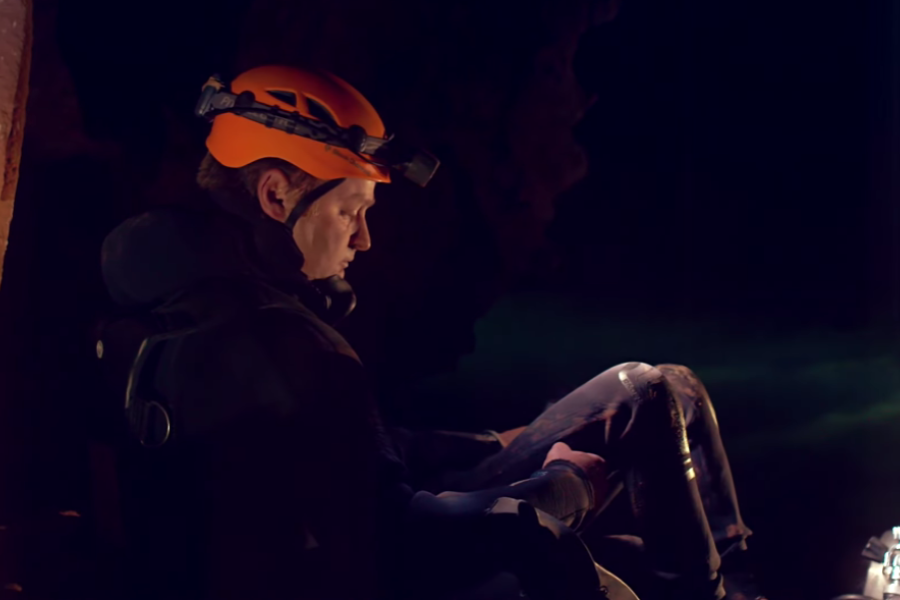
Each boy was numbered. Assessed. Reassured. “You’ll fall asleep here,” Harris said. “When you wake up, you’ll be out.” They nodded slowly. Clueless of its danger. Some cried. Others whispered, “Thank you.”
Ketamine. Fast. Reliable. Safe—if timed perfectly. Xanax to calm nerves. Atropine to keep lungs dry. Divers practiced with dummies. Each child had only one shot.
Masks were fitted. Seals were checked again. And again. “No mistakes,” Harris reminded them. “We only get one chance.” The cave wasn’t waiting. And neither was the rain.
What If They Wake Up?

It was the question no one wanted to say aloud: What if one wakes up? Underwater. Disoriented. Panicking. A child flailing in the dark could doom everyone nearby.
Dr. Harris looked each diver in the eye. “You must be ready to re-dose mid-rescue,” he said. Ketamine syringes were strapped inside waterproof sleeves. No room for hesitation.
“We’re dragging sedated kids through a flooded tomb,” one diver said. “If one of them comes to… that’s it.” They didn’t talk after that. They just nodded.
The First One Goes In

July 8. The first boy was sedated, gently masked, his limbs limp and trusting. His name wasn’t shared. Not even with the rescuers. In case the worst happened.
Two divers took him—one in front to guide the rope, one behind to monitor oxygen and life. Every bump, every squeeze, could unseat the mask and let water in.
They disappeared into the dark. One hour passed. Then two. On the radio, silence. Then: tug, tug. The rope moved. The boy was coming out!
The Rope Tugs. Then Goes Still

Halfway through, the rope stopped. No vibration. No signal. Divers at the chamber edge leaned in, hands on the line, hearts holding still.
“Did they lose him?” someone whispered. No one answered. Time stretched, thin and cruel. A diver pressed his fingers to the rope, wrapped in cold sweat, searching for breath through tension.
Then—movement. Slow. Steady. The diver emerged, mask soaked, cradling the unconscious boy. He was breathing. Mask sealed. One down. Twelve to go. But the cave wasn’t done yet.
One Out. Twelve Remain
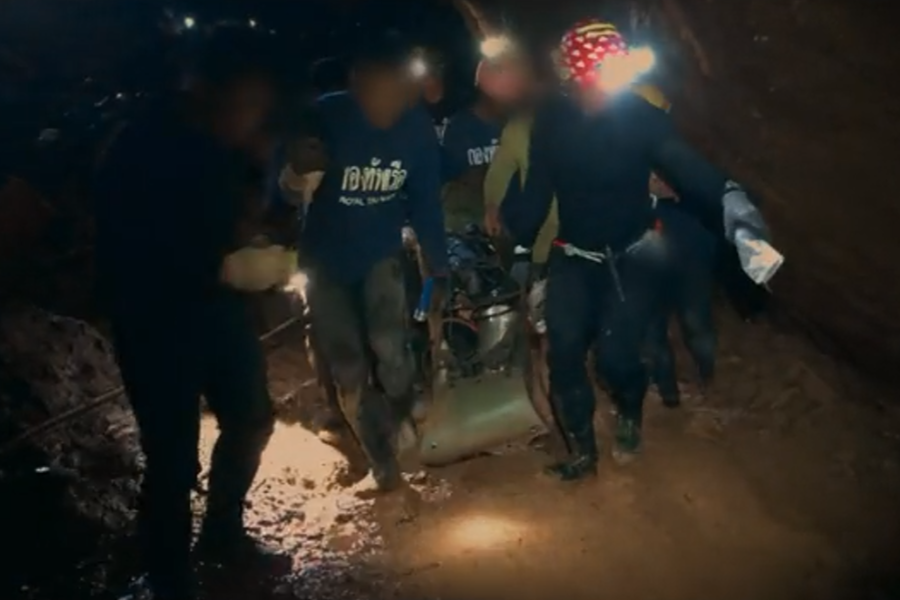
Medics rushed the boy to the field hospital. He was still asleep when his lungs were checked. Still breathing. No damage. He opened his eyes. Alive.
Back at the cave entrance, no cheers. No names. Even the parents didn’t know who had come out. “If one doesn’t make it,” a rescuer said, “we can’t let the others lose hope.”
Inside, Dr. Harris knelt beside the next boy. “Your turn,” he said gently. The boy nodded. The cave growled. And they went again.
The Second Extraction Begins

July 9. The sky was turning. Rain clouds stacked on the horizon. Time was collapsing. The window was closing. But they have to keep trusting the system.
Four more boys were sedated, masked, and floated through four kilometers of shifting dark. One diver nearly lost a child in a tight bend. “The helmet slipped,” he said. “I caught it just in time.”
Four more emerged that day. Breathing. Sleeping. Safe—for now. But eight still waited. And the mountain was stirring again.
T-Junction Holds Its Breath
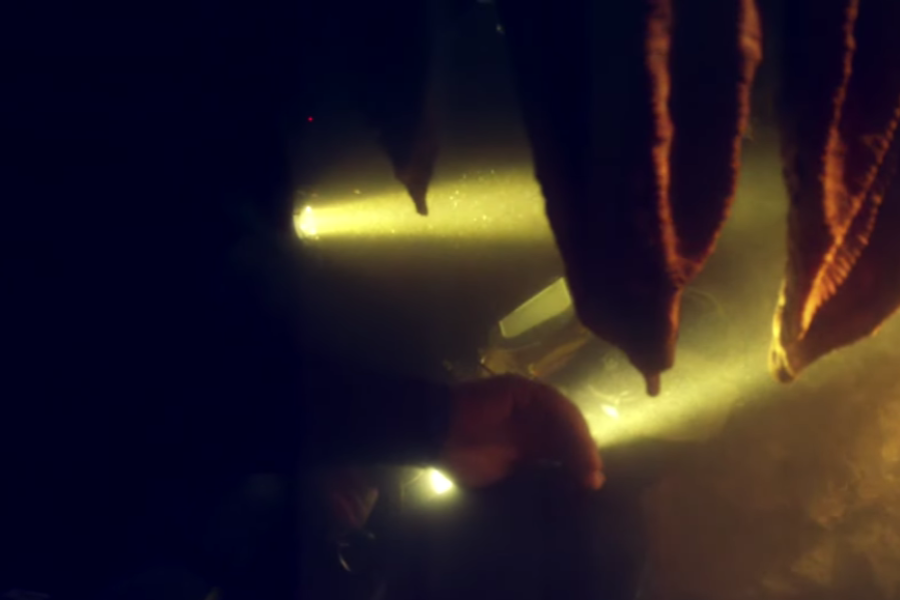
T-Junction. They called it the ‘nightmare point’. A shoulder-width squeeze, stone scraping tanks, space too tight for mistakes. One wrong motion, and it would all end there.
A diver’s shoulder clipped the ceiling. The boy behind him floated like glass. Unconscious. Every breath hanging on a mask seal and a prayer.
They made it through. Just barely. The diver exhaled the moment they cleared it. “If anything goes wrong in there,” he whispered later, “there’s no coming back.”
Coach Eak Refuses to Go
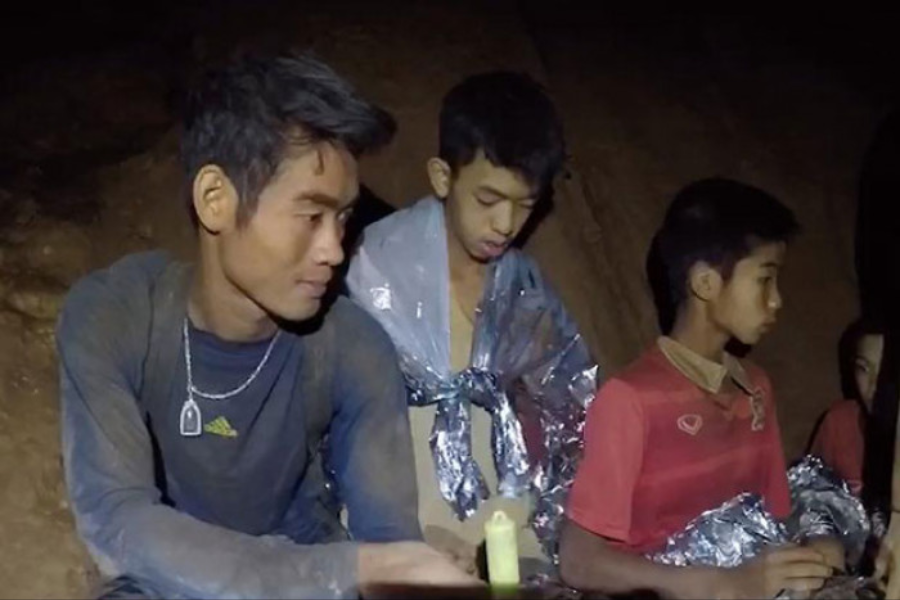
His chance came. A diver gestured. The path was open. The masks were ready. Coach Eak shook his head. “The boys,” he said quietly. “They go first.”
He had given them meditation, comfort, and strength. Now he gave them his place in line. “They are not just my team,” he told a rescuer. “They are my brothers.”
A hand touched his shoulder. “We’ll come back for you,” the diver promised. Eak nodded once. Then stepped back into the dark, waiting for all of them to leave before him.
The Cave Is Getting Angry
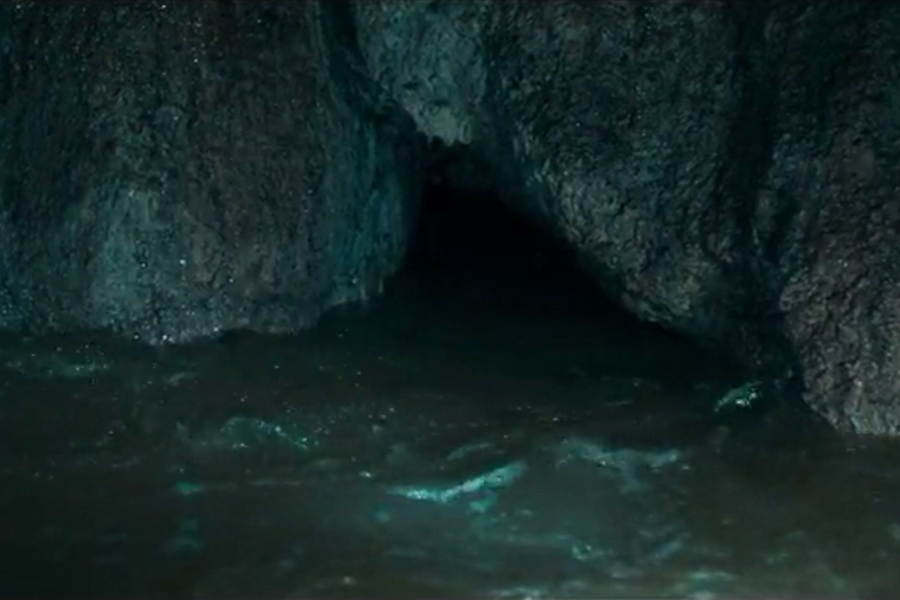
Water surged again—louder, faster, angrier. Pumps groaned. One collapsed under pressure. A dry chamber went under in minutes. The cave was rising. The storm had returned.
“Levels are spiking,” someone shouted at the surface. Maps blurred with raindrops. Oxygen tanks were loaded in a rush. Divers clipped on backup masks with shaking hands.
“There’s no more time,” a SEAL snapped. The cave wasn’t waiting anymore. They had hours—maybe less—before it closed again for good.
The Third Day Begins With Thunder
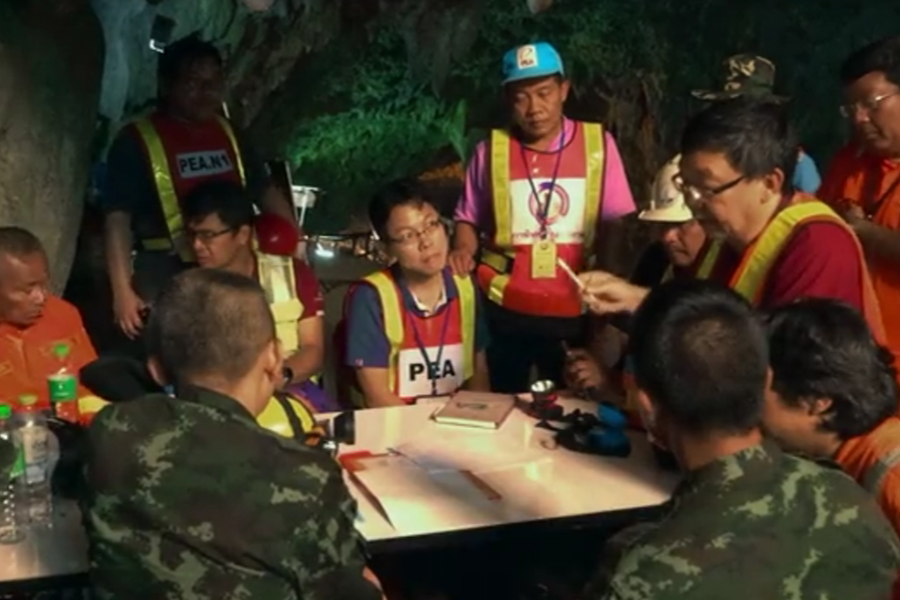
July 10. Thunder shattered the sky before sunrise. Rain slammed the tents like fists. Inside the camp, everything moved at once—orders shouted, stretchers prepared, headlamps clicked on.
“This is it,” Governor Narongsak said. We finish this today. Or not at all.” Helicopters stood by. Nurses lined the hospital corridors. The final dive had begun.
Inside Tham Luang, the last four waited: three boys and Coach Eak. Outside, the sky cracked open. The cave was closing. The storm was here.
Racing Against The Weather
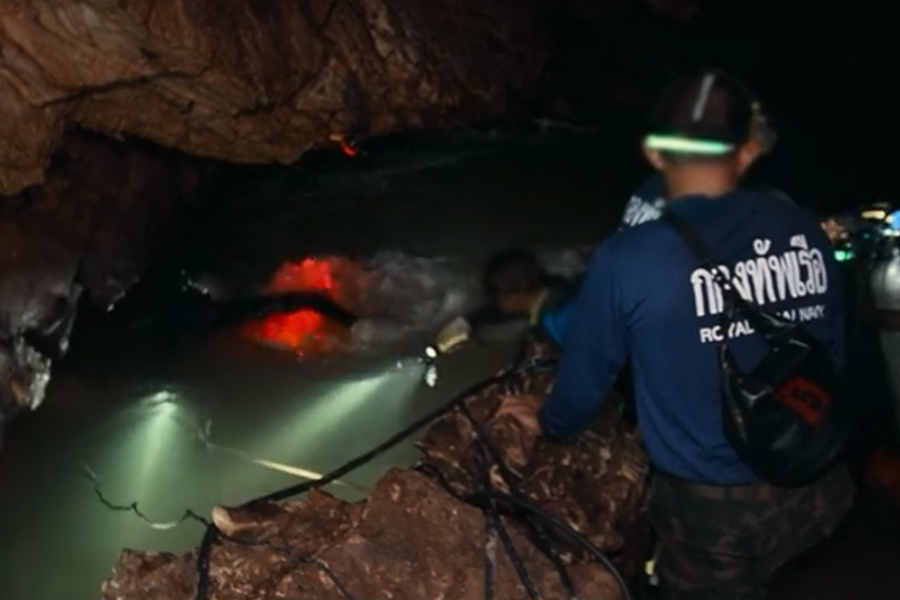
Inside, the divers worked like a machine—one boy sedated, one carried, one monitored. No hesitation. No time. Every breath was against the clock.
The storm clawed at the mountain. Floodwater pressed harder. The rescue teams didn’t speak anymore—they moved on instinct, guided by memory, rope, and muscle memory etched by fear.
Four more children came out that day. Sleeping. Breathing. The rain was at their heels. And the cave had not yet claimed its final say.
The Last Rope Snaps Taut
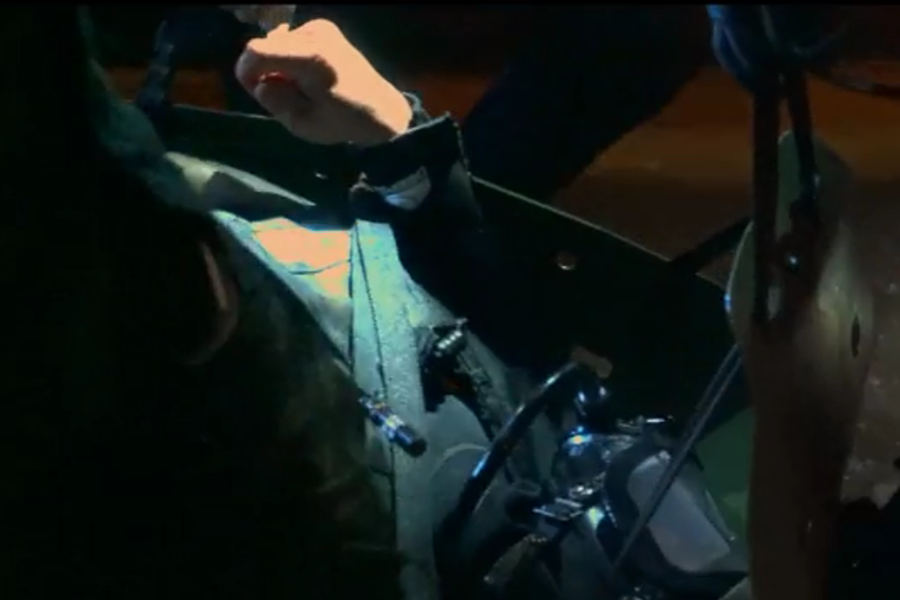
The plan shifted. For safety. For speed. Coach Eak didn’t argue. “Whatever helps them,” he said. Pride wasn’t worth a single second of risk.
He followed the divers out, quiet and calm. Behind him, one SEAL stayed to sweep the chamber, checking every pocket, every crevice, one last time.
Then came the final boy. Carried gently. Masked. Silent. The rope tugged once. Then again. And finally, it went still. The cave was empty. And the sky exploded with rain.
A Salute for the Fallen
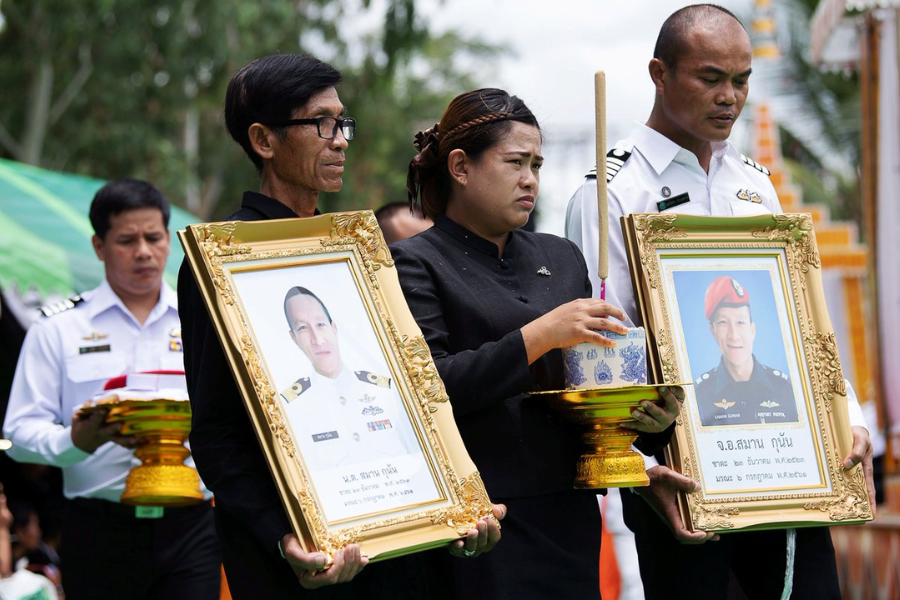
As the final boy emerged into light, a different scene unfolded: incense smoke, silent rows of SEALs, and a widow holding a framed photograph.
Saman Kunan had died carrying life into the cave. His funeral was full of uniforms and bowed heads. “He gave them another chance at life,” one commander said. “And it cost him his last.”
Monks chanted. Volunteers wept. Thirteen lived. But one did not return. And the cave will never forget his name. Meanwhile, another terrible news was received on the other end of the line…
Tears on the Helicopter Floor
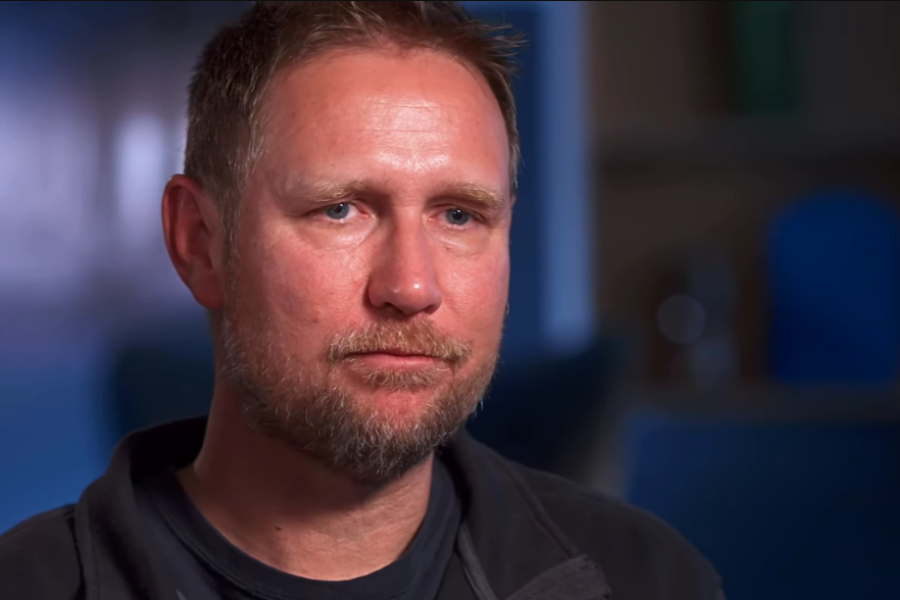
Dr. Harris boarded the helicopter after the last rescue. His body was upright, but his heart had collapsed. The adrenaline was gone. And the silence arrived.
Mid-flight, he received a call: his father had passed the night before. Harris had stayed to finish the mission, unaware. He closed his eyes and wept alone.
No cameras. No medals. Just grief. Grief for a diver. For his father. For the risk that nearly broke them all. The mission was finally over. As Rick Stanton would call it, “Unbelievable.”
Boys in Beds. Cameras in Faces

At Chiangrai Prachanukroh Hospital, each boy rested behind glass, monitored, masked, and safe. The world had held its breath for them. Now, the world exhaled.
Some waved. Others whispered for food, cartoons, a quiet return to childhood. No fanfare. No interviews. Just soft sheets, steady pulses, and eyes adjusting to light again.
Outside, cameras clicked, but the miracle was already complete. They had made it back. From the dark. From the water. From the edge. Now, they just needed time.
The World Came Together
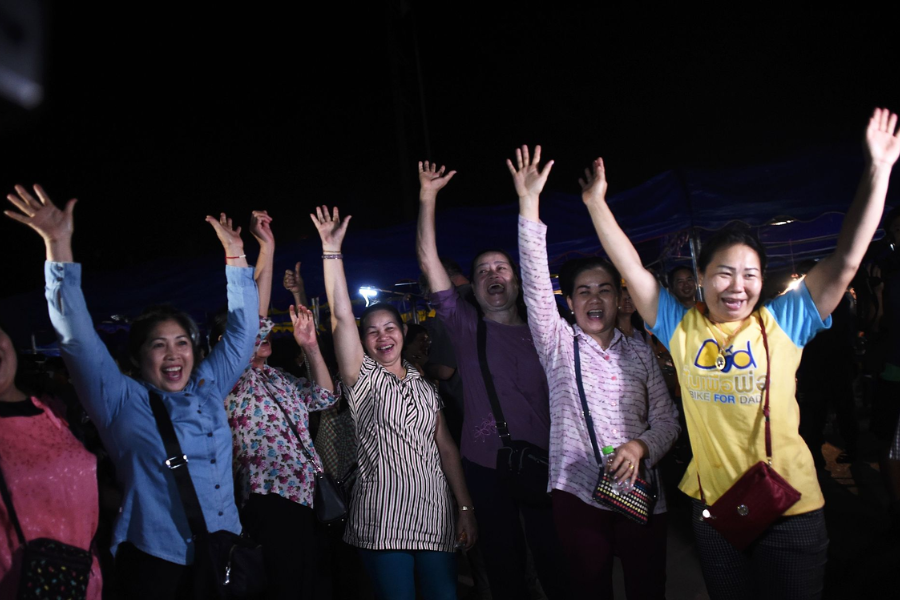
When the cave went silent, the world kept talking—not with noise, but with awe. They hadn’t just saved thirteen children. They had proved something bigger.
Farmers, divers, monks, engineers, soldiers—different languages, creeds, nations. No one asked for a reward. All came for one reason: to pull hope from the dark.
Governor Narongsak said it best: “This mission was successful because of unity—of mankind, of countries, of faith. We all came together. And we did not let go.”
